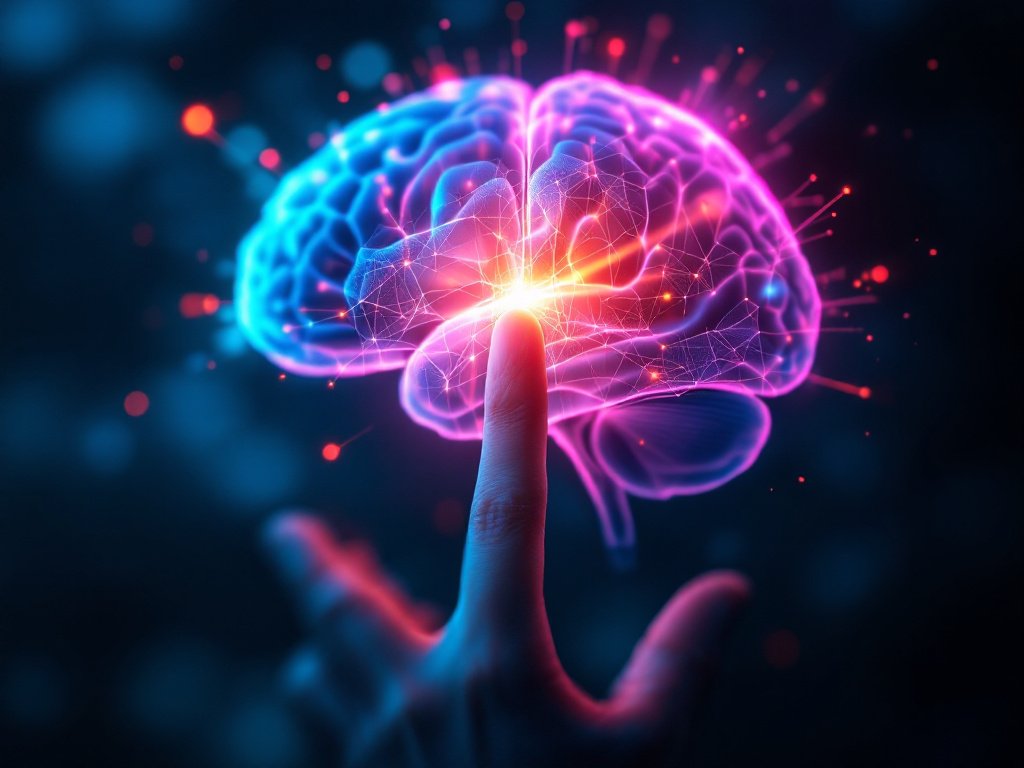
The Science of Kink: What Neuroscience Says About Fetishes
Introduction to the Science of Kink
The world of kink and fetishes is as vast and varied as human sexuality itself. Beyond mere curiosity, there’s a growing body of scientific research that delves into the psychological and neurological underpinnings of why we develop specific desires and preferences. Understanding these intricacies can not only validate the feelings of those who engage in kink but also foster a more inclusive dialogue around the complexity of human sexuality. So, let’s dive into the science behind our kinks and fetishes and uncover what neuroscience has to say about this colorful aspect of our lives.
Understanding Kink and Fetishes
Kink and fetishes often interlace in a rich tapestry where personal preferences can create unique patterns of sexual pleasure. A kink generally refers to an unconventional sexual practice or fantasy that may include activities like BDSM, role-playing, or even specific forms of touch. On the other hand, a fetish is typically defined as a heightened sexual attraction to a particular object or body part—think foot fetishists or those who can’t get enough of leather corsets.
What’s fascinating is that these desires can stem from various sources, including personal experiences, societal influences, or even early developmental milestones. For instance, researchers have found that experiences in childhood may shape future sexual interests, essentially wiring the brain to respond to certain stimuli in specific ways. This brings us to the scientific lens through which we can explore how kink manifests in our lives.
The Intersection of Neuroscience and Sexuality
Neuroscience has shed light on the biological underpinnings of sexual arousal and behavior. Studies have discovered that when people engage in kink or experience sexual arousal, various brain regions activate, particularly those associated with pleasure, reward, and social bonding. For instance, the release of neurotransmitters like dopamine and oxytocin during kink acts akin to taking a euphoric rollercoaster ride for your brain!
Moreover, some researchers posit that the brain’s ability to form connections between specific stimuli and pleasure can be influenced by conditioning—think Pavlov’s dogs, but with a twist. This can explain why certain sights, sounds, or sensations can yield strong responses, becoming integral to one’s sexual experience. Understanding this intersection between neuroscience and kink not only broadens our comprehension of sexual identity but also encourages acceptance of diverse sexual desires.
Importance of Scientific Exploration in Understanding Kink
Exploring kink and fetishism through a scientific lens is crucial for several reasons. First and foremost, it lends legitimacy to experiences that might otherwise be marginalized or stigmatized. A better grasp of the psychological and neurological factors at play can foster empathy and understanding among those outside the kink community, broadening the conversation around sexual diversity.
Moreover, scientific exploration opens avenues for mental health professionals to offer informed and compassionate care to clients with kinks and fetishes. Therapists equipped with knowledge about the neurology of these preferences can provide nuanced support, fostering healthy attitudes toward one’s sexuality.
Ultimately, the science of kink challenges unnecessary taboos and enriches our understanding of the human experience, proving that our desires—whether vanilla or spicy—are worthy of exploration and appreciation.
Neuroscience Fundamentals

Understanding the science behind kink and fetish requires a dive into the fascinating world of neuroscience. Our brains play a crucial role in shaping our sexual desires and preferences, including the unique flavors of kink. As we explore the relationship between brain structure, neurochemical reactions, and sexual arousal, we gain insights into how our minds engage with these complex experiences. Let’s unravel the connections between the brain and sexuality, focusing on three key aspects: brain structure, neurochemical reactions, and the processing of arousal and desire.
Brain Structure and Function Related to Sexuality
The brain regions involved in sexual behavior are diverse and complex. Among them, the limbic system, particularly the amygdala and the hippocampus, play significant roles in processing emotional responses to sexual stimuli. The amygdala helps evaluate situations and assesses what might provoke our arousal, while the hippocampus contributes to the memory aspect of sexual experiences.
Additionally, the prefrontal cortex, known for its executive functions like decision-making and impulse control, also influences our sexual desires. It’s the place where we wrestle with our fantasies — determining which desires to pursue and which to set aside. Notably, in individuals who embraced kink or fetish interests, studies suggest that activation in these brain regions can differ from more conventional sexual experiences, potentially helping to explain the rich variety of sexual preferences found in human experience.
Neurochemical Reactions and Pleasure
Neurotransmitters like dopamine, oxytocin, and serotonin significantly impact our sexual experiences. Of these, dopamine is often referred to as the “pleasure chemical,” released during rewarding activities, including sex. It creates a sense of pleasure and reinforces behaviors that involve kink and fetish. For example, engaging in bondage can kickstart a dopamine rush, contributing to the pleasurable sensations associated with restraint.
Oxytocin, frequently dubbed the “bonding hormone,” enhances feelings of connection and trust between partners, making it especially important in BDSM scenarios, where trust and consent are paramount. This neurochemical reaction deepens emotional connections and can certainly heighten feelings of vulnerability or excitement during kink activities. Understanding these neurochemical responses can shed light on why people seek out and relish their particular fetishes.
How the Brain Processes Arousal and Desire
When it comes to the brain’s processing of arousal, it’s a multi-faceted affair influenced by both cognitive and emotional factors. Research shows that sexual arousal involves coordinated activities across various brain regions, with significant overlap in areas that process pleasure and reward. Importantly, the anterior cingulate cortex and the insula are activated, helping you navigate the sensations associated with arousal.
Moreover, conditioning plays a crucial role. Experiences that trigger arousal, whether through specific sites, materials, or situations, become intertwined with our desires. For instance, if a person feels aroused by leather or ropes due to past experiences, their brain will start associating these items with pleasure. This process illustrates how deep and ingrained the links between our past experiences and present desires truly are. Understanding this can empower individuals to explore their kinks with a deeper awareness of their psychological and neurological underpinnings.
The Development of Fetishes

The origins of fetishes often trace back to early developmental experiences, where significant childhood events can shape and manifest future sexual preferences. Understanding these formative years can shed light on how certain objects or practices gain an erotic significance in our adult lives. Let’s explore the influences of childhood experiences, conditioning, and even evolutionary perspectives that contribute to the development of fetishes.
Childhood Experiences and Bonding Patterns
Childhood is a crucial time when individuals begin to form their understanding of intimacy and attachment. Bonding experiences during these years, such as those with caregivers or early romantic interests, can profoundly influence our sexual development. For instance, a child who regularly observes a parent in a high-heeled footwear might later develop a fetish for shoes, specifically high heels. These formative moments create pathways in the brain that link specific objects or scenarios with feelings of safety, comfort, or excitement.
Interactions involving care and affection can also establish patterns where the body and its sensations become intertwined with emotional responses. It’s quite possible that children who experience tactile stimulation through cuddling or tactile play may find themselves later drawn to similar sensations in adulthood. This early bonding forms a foundation for unique sexual attractions, underscoring how vital these experiences are in developing a person’s kink or fetish.
Conditioning and the Role of Associations
Conditioning plays a significant role in the formation of fetishes, linking desirable feelings with specific stimuli. This concept builds on Pavlovian conditioning, where an individual learns to associate a neutral stimulus with a response. For example, if someone has a memorable experience while wearing a particular outfit or engaging in a specific act, they might develop a conditioned response that ties their arousal to that object or experience.
For instance, if a young person feels euphoric at a party where they wore something deemed “risky” or “forbidden,” the excitement of that experience may create a lasting association with that item of clothing. Years later, when they encounter similar attire, those associations can elicit significant arousal. This psychological mechanism emphasizes the power of associations and how deeply intertwined they can become with our desires, serving to reinforce the significance of certain objects or practices as fetishistic.
Evolutionary Perspectives on Sexual Preferences
From an evolutionary standpoint, some researchers suggest that fetishes may stem from adaptive behaviors tied to reproduction and mate selection. Elements that seem sexually alluring in a non-sexual context could have evolved to signal fitness or attract potential mates. For example, certain body parts like feet or hair may hint at fertility or vitality, drawing sexual attention in a way that promotes lineage and survival.
Moreover, the variety in sexual preferences and fetishes may also serve to enhance sexual strategies and diversity within the population. By possessing a range of arousal triggers, individuals may increase their chances of mating and forming diverse pairs, thereby enriching the genetic pool. This perspective provides profound insights into why some fetishes can be so widespread despite seeming trivial or obscure. Ultimately, evolutionary theories challenge us to consider how much of our sexual desires could tie back to innate drives shaped by our very history as a species.
What Neuroscience Tells Us About Fetishes

Understanding the science behind fetishes can be as fascinating as the fetishes themselves. Neuroscience offers valuable insights into how our brains respond to sexual stimuli, revealing that our desires are not only deep-seated but also intricately wired into our neural architecture. This section explores the latest findings in neuroscience that explain how fetishes develop, their underlying mechanisms, and how our brains process these unique sexual preferences.
Brain Imaging Studies on Kink and Fetishes
Recent brain imaging studies have illuminated the fascinating connections between kink, fetishes, and our brain’s reward systems. Research using functional magnetic resonance imaging (fMRI) shows that when individuals engage with their fetishes—be it through visual stimuli, touch, or fantasy—there is significant activation in areas associated with pleasure and reward, such as the ventral striatum.
One notable study found that participants viewing fetish-related images experienced increased blood flow in the amygdala, a region linked to emotional responses. This suggests that our emotional ties to specific fetishes shape the way we perceive and process arousing scenarios. Consequently, the brain rewires itself to reinforce these pleasurable experiences, creating a potent loop of desire and reward that can be deeply fulfilling.
The Role of Neurotransmitters in Fetish Development
Neurotransmitters play a critical role in the development and maintenance of fetishes. Chemicals like dopamine, oxytocin, and serotonin are crucial in shaping our sexual preferences and experiences.
Dopamine, often referred to as the “feel-good hormone,” is released during pleasurable activities. Engaging in fetish behavior can flood the brain with dopamine, reinforcing the association between the fetish object and pleasure. Oxytocin, the bonding hormone, can enhance feelings of intimacy and trust during fetish-based activities, making the experience not just physically pleasurable but emotionally rewarding as well.
Furthermore, serotonin helps regulate our mood and emotional responses, which can influence how we feel about our fetishes. A healthy balance of these neurotransmitters is essential for the overall satisfaction derived from kink and fetish experiences.
Neural Pathways and Sexual Preferences
Neurological research indicates that our sexual preferences, including fetishes, are rooted in specific neural pathways that develop over time. These pathways are significantly influenced by early sexual experiences, cultural factors, and individual psychology.
When stimuli linked to fetishes are consistently paired with arousal, these neural pathways become more defined and pronounced. For instance, if an individual repeatedly associates a particular object—like leather—with sexual experiences, the brain may begin to activate the same reward circuits when exposed to that object in the future, even outside of sexual contexts.
Moreover, individual differences in brain anatomy can also affect fetish development. Some people might have a more extensive or interconnected neural network that predisposes them to certain preferences. This underscores the complexity of human sexuality; our brains are uniquely shaped by both our biology and experiences, leading to a rich tapestry of fetishes and kinks that are as varied as the individuals themselves.
Psychological and Biological Theories

In the fascinating intersection of kink, fetish, and neuroscience, psychological and biological theories provide insight into why some individuals may have unique sexual preferences. Understanding these theories can enhance our comprehension of sexual behavior within the scope of BDSM and fetishes. Let’s dive deeper into some of the key theories that have shaped our understanding of sexual identity and preferences.
Freud’s Theories and Modern Interpretations
Sigmund Freud, the father of psychoanalysis, delved into the complexities of human sexuality with groundbreaking theories. He proposed that our early experiences, particularly during childhood, significantly shape our sexual preferences and behaviors. Freud’s concept of “sexual imprinting” suggested that formative interactions could lead to specific fetishistic desires later in life. For example, a person who received a lot of attention for a particular behavior in adolescence might later develop a kink associated with that experience.
While Freud’s theories sparked much debate, modern psychologists have refined and built upon them. Today, many psychologists incorporate a broader view that considers not only individual upbringing but also social and cultural contexts. Researchers have proposed that while early experiences may influence preferences, they are often not as deterministic as Freud suggested. Instead, they emphasize the importance of ongoing personal experiences and social dynamics in shaping one’s sexual identity.
The Role of Genetics in Sexual Behavior
Could our sexual preferences be encoded in our DNA? Researchers have begun to explore the possibility of genetics playing a role in human sexuality. Studies indicate that variations in certain genes may influence sexual orientation and preferences, including kink and fetish behavior.
For instance, genetic predispositions might affect how individuals respond to different stimuli or handle arousal, ultimately shaping their sexual interests. However, the genetic influences on sexuality are likely multifaceted and not directly determinative; they interact with environmental factors such as upbringing, culture, and personal experiences. This blend of genetics and environment helps explain the diversity and complexity of human sexual behavior, illustrating how nature and nurture collaboratively craft our desires.
Hormonal Influences on Sexual Preferences
Hormones play a critical role in shaping our sexual preferences and behaviors. Various hormones, such as testosterone and oxytocin, influence sexual arousal and can shape how we engage with our erotic interests. For instance, studies suggest that increased testosterone levels correlate with heightened sexual desire and may influence the propensity to explore kinks and fetishes.
Additionally, oxytocin, often dubbed the “love hormone,” can enhance feelings of attachment and intimacy. This hormone’s release during BDSM activities (especially those that involve trust and submission) may deepen emotional connections, making those experiences not only pleasurable but also psychologically rewarding. Understanding these hormonal dynamics can provide depth to our comprehension of how biology and sexuality intersect, highlighting the complex mechanisms behind our desires in the world of kink.
Conclusion
As we venture into the intriguing world of kink and fetishes, it’s essential to gather our thoughts and insights. Neuroscience provides a fascinating perspective on why certain activities ignite passion in some while leaving others indifferent. Understanding the science behind these sexual desires not only helps demystify them but also promotes a deeper appreciation of human sexuality’s diversity.
Summary of Neuroscientific Insights
Neuroscientific research unveils how our brain responds to various stimuli, positioning fetishism not as a deviance, but rather a unique response shaped by a blend of psychological and environmental factors. Studies indicate that brain regions linked to reward, pleasure, and aversion are activated during fetishistic experiences, suggesting that these kinks can fulfill emotional and psychological needs. For instance, the heightened dopamine release during a BDSM scene can create intense feelings of euphoria. This is pivotal in indicating that these behaviors serve to connect people on much deeper levels than mere physical pleasure. By recognizing the neurological underpinnings, we can better understand the spectrum of human sexuality.
The Future of Research in Sexuality and Fetishes
Looking ahead, there’s an exciting potential for more comprehensive research into sexuality and fetishes. Advancements in neuroimaging and psychological studies can lead to better understandings of how sexual preferences develop and change over a lifetime. As researchers continue to explore the intersections of biology, psychology, and sociology, we can expect to uncover insights that validate unconventional desires and broaden our understanding of sexual health. This evolving research landscape holds promise not only for academic understanding but also for therapy and counseling related to sexual wellness.
Encouraging Open Discussion and Acceptance in Society
The key to fostering a healthy dialogue around BDSM and fetishes lies in open discussion and acceptance. Eliminating stigmas associated with kinks can lead to healthier relationships, improved mental wellness, and enhanced self-acceptance. By creating safe spaces for people to share their experiences and desires, we help normalize these conversations within society. Encouraging educators, therapists, and influencers to discuss sexuality openly can promote a culture that embraces diversity in sexual preferences. Ultimately, understanding that everyone has unique desires should move us towards a more inclusive world where all forms of consensual sexual expression can be celebrated.